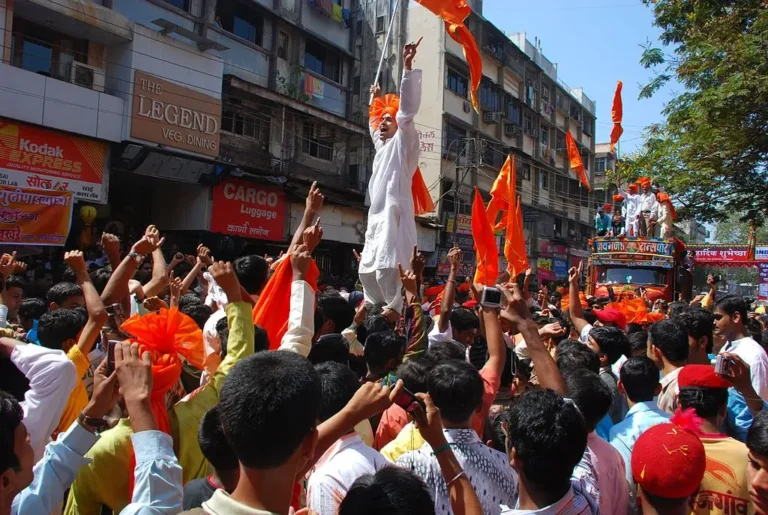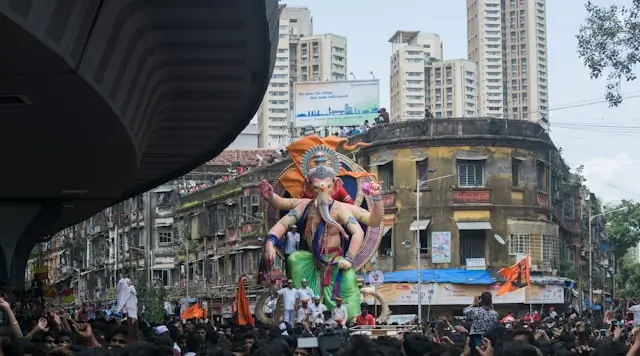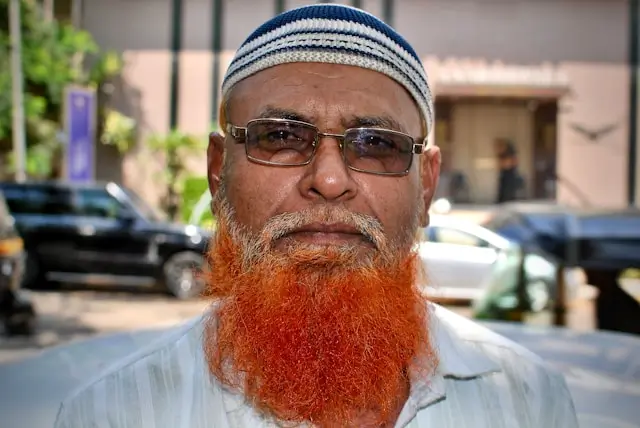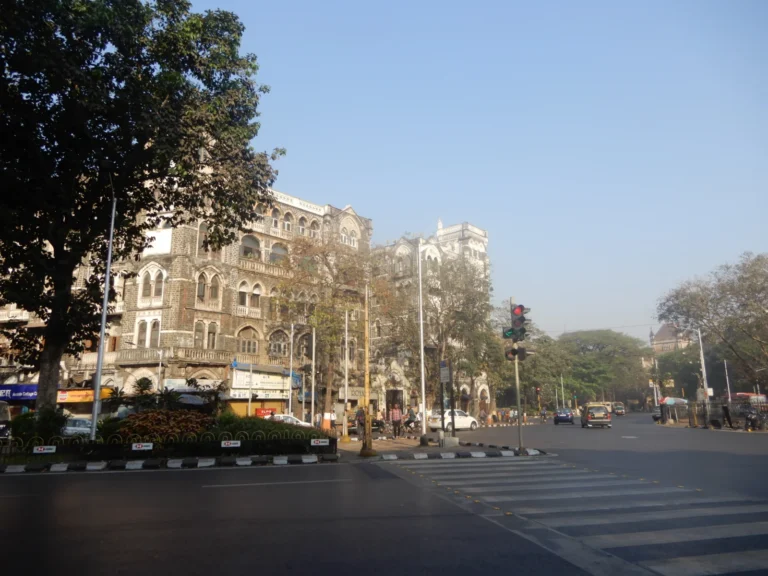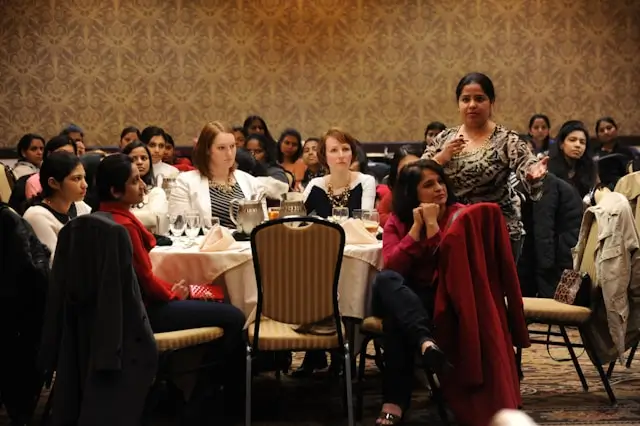Why Do Indian Families Live Together?
In India, it’s common to see several generations of a family living together under one roof. But why is this? Is it due to tradition, practicality, or something else entirely?
Perhaps it’s a combination of all three. The concept of a joint family system has been an integral part of Indian culture for centuries, and it has its roots in the idea of a close-knit community where everyone supports each other. This system provides several benefits, such as emotional and financial support, shared responsibilities, and the passing down of family values and traditions from one generation to the next. Let’s explore the reasons why Indian families choose to live together and how it has impacted their society.
Benefits of Living Together
Living together with family members is a norm in many cultures, including India. The practice of multi-generational living has been prevalent in India for centuries and is deeply rooted in the country’s cultural values. The benefits of living together are numerous, ranging from economic advantages to emotional support and social cohesion.
One of the most significant advantages of living together is the economic benefits. By pooling resources, families can share the cost of living expenses such as rent, utilities, and groceries, resulting in significant cost savings. This approach allows family members to focus on other financial goals such as education, investment, or starting a business.
Another benefit is emotional support. Living together means that family members can rely on each other for emotional support during challenging times. In India, where family relationships are highly valued, living together ensures that family members are never alone and can lean on each other for support.
Social cohesion is another benefit of living together. When families live together, they can maintain strong bonds and preserve their cultural heritage. Children grow up learning about their culture, customs, and traditions from their elders. This also fosters a sense of community and belonging, which is especially important in a rapidly changing world.
Lastly, living together allows for better care for the elderly. As parents and grandparents age, they require care and support, and living together ensures that they are well taken care of. Elders can benefit from the attention and care provided by younger family members, and family members, in turn, can learn from the wisdom and experience of their elders.
Overall, living together has many benefits, including economic advantages, emotional support, social cohesion, and better care for the elderly. It is a practice deeply ingrained in Indian culture and has stood the test of time.
Family Dynamics in India
Family dynamics in India are unique and deeply ingrained in the culture. The family structure is hierarchical and the role of elders in the family is highly respected.
In Indian families, the elderly members are considered the heads of the family and their opinions and decisions are considered paramount. Family honor is also very important, and it is believed that the actions of one family member can impact the entire family’s reputation.
Furthermore, patriarchal norms still prevail in many Indian households, with men traditionally being the breadwinners and women expected to take care of the home and family. However, this dynamic is slowly changing, and more women are taking on roles outside of the home.
Intergenerational relationships are also a crucial part of family dynamics in India. Parents have a strong sense of responsibility towards their children and are often involved in their lives well into adulthood. Grandparents also play an important role in the lives of their grandchildren and are often seen as an additional source of emotional support.
Overall, family dynamics in India are complex and multifaceted. While patriarchal norms still exist, there is a growing emphasis on equality and respect for all members of the family. The importance of family honor and intergenerational relationships also remains strong.
Challenges of Living Together

Living together with family members can be a rewarding experience, but it also comes with its own set of challenges. One of the main issues that arise when living with family members is the lack of privacy. It can be difficult to find time alone and personal space when living in close quarters with others. Additionally, resolving conflicts can be tricky when emotions are high and family dynamics are at play.
Another challenge that often arises is differences in opinion. Family members may have varying values, beliefs, and ideas on how to approach certain situations. Balancing individuality and family values can also be a struggle. It’s important to find a balance between expressing oneself and respecting the traditions and values of the family.
Despite these challenges, there are ways to navigate them successfully. Communication is key when living together with family members. Being open and honest about one’s needs and concerns can help to prevent conflicts from escalating. It’s also important to establish boundaries and respect each other’s personal space.
In conclusion, while living together with family members can be a fulfilling experience, it also comes with its own unique set of challenges. By recognizing these challenges and taking proactive steps to address them, individuals can successfully navigate the complexities of family dynamics and enjoy the benefits of living together.
Impact of Modernization
The impact of modernization on family dynamics in India has been significant. As the country continues to develop, attitudes toward living arrangements are shifting. With the increasing use of technology, family communication patterns are also changing. The rise of globalization has brought new ideas and practices to the country, influencing family structures and values.
Changing attitudes towards living arrangements are a clear reflection of modernization. In the past, it was common for multiple generations to live together under one roof. However, with more young people moving away from their families for education and job opportunities, nuclear families are becoming more prevalent.
Technology has also had a profound impact on family dynamics in India. Social media and messaging apps have made communication easier, but it has also changed how family members interact with each other. While technology has allowed for increased communication, it has also made it easier for family conflicts to escalate.
Finally, the influence of globalization cannot be ignored. The rise of global trends and values has challenged traditional family structures in India. The concept of individualism is becoming more prevalent, and young people are increasingly questioning gender roles and traditional family values.
Overall, the impact of modernization on family dynamics in India is complex and multifaceted. As the country continues to develop and evolve, it is important to understand and navigate the changing landscape of family life.
Regional Variations
India is a land of diverse cultures and traditions, and this is reflected in the way families are structured across different regions. In North India, families tend to be patriarchal and hierarchical, with the eldest male member holding the highest authority.
In contrast, South Indian families are more matriarchal, with women playing a central role in decision-making. East Indian families are known for their simplicity and warmth, with an emphasis on hospitality and community living.
Finally, West Indian families are known for their openness and flexibility, with a more relaxed approach to family hierarchies.
The regional variations in family dynamics can also be seen in the types of living arrangements that are prevalent. In North India, joint families are still the norm, with multiple generations living under one roof.
In contrast, nuclear families are more common in South India, with parents and their children living separately from extended family members. In East India, there is a preference for living close to other family members, but in separate homes. Finally, in West India, there is a trend towards more individualistic living arrangements, with a focus on personal freedom and privacy.
These regional variations in family dynamics and living arrangements are a reflection of the unique cultural and social influences that shape each region. Understanding these variations can help us appreciate the diversity of Indian culture and enable us to build stronger relationships with people from different backgrounds.
Religious Influence
Religion has been an integral part of Indian culture for centuries and has a significant impact on family structures. Hinduism, the predominant religion, emphasizes the concept of joint families, where multiple generations live together under one roof.
The patriarch of the family holds the highest authority and takes care of everyone’s needs. Hinduism also promotes the idea of “karma,” where every action has a consequence, and one must fulfill their duties towards their family and society.
Islamic traditions also emphasize the importance of family and place great emphasis on honoring parents and elders. In Islamic households, the father is considered the head of the family and is responsible for providing for everyone’s needs. Islamic culture also encourages extended family living, and it is common for grandparents to live with their children and grandchildren.
Christian beliefs in India vary depending on the region, but many Christians still hold onto traditional family values. The family structure in Christian households is usually nuclear, consisting of parents and children. However, extended family members still play a significant role in providing emotional and social support.
Sikhism, a religion that originated in the Punjab region, promotes communal living and the idea of a “Sangat,” which is a group of people who come together to worship and support each other. Sikh families often live close to each other and maintain strong ties with extended family members.
In conclusion, religion has a significant influence on family structures in India, with each religion emphasizing different values and beliefs. Whether it is the concept of joint families in Hinduism or communal living in Sikhism, religion continues to shape and define Indian family dynamics.
Migration and Living Arrangements
Migration has always been a major factor influencing the family structure and living arrangements. When people move from one place to another, they often leave behind their extended families and support systems. This can lead to a breakdown of traditional family structures and the formation of new ones.
One of the most significant impacts of migration on the family structure is the breakdown of joint families. In traditional joint families, several generations live together under one roof and share resources.
However, with migration, this structure has become increasingly rare. Young people often move to urban areas in search of better employment opportunities, leaving behind their parents and other family members in rural areas. This has led to the formation of nuclear families, which consist of parents and their children living together.
Another significant impact of migration on the family structure is the differences in living arrangements between urban and rural areas.
In urban areas, people are more likely to live in nuclear families, while in rural areas, extended families are more common. This is partly because urban areas offer more job opportunities, which attract young people who want to live independently.
Overall, migration has had a profound impact on family structure and living arrangements. While it has led to the breakdown of traditional family structures, it has also led to the formation of new ones. As people continue to move in search of better opportunities, family structures, and living arrangements will likely continue to evolve.
Conclusion
Living together in a joint family system can bring both benefits and challenges. It provides a support system and a sense of community, but can also lead to conflicts and power struggles. It’s important to understand the cultural context in which this family structure operates and to appreciate the traditions and values that inform it.
Recognizing the importance of cultural context is key to understanding the family structure, not just in India, but in all societies. It allows us to appreciate the nuances of family dynamics and how they shape individual lives.
To truly understand Indian family dynamics and traditions, it’s important to continue learning and exploring. Whether it’s through reading, travel, or conversation, taking the time to engage with different perspectives can broaden our understanding and deepen our appreciation for the complexities of family life.
So let’s keep the conversation going! Have you experienced or observed living in a joint family system? What were some benefits or challenges you encountered? Share your thoughts and experiences in the comments below.


